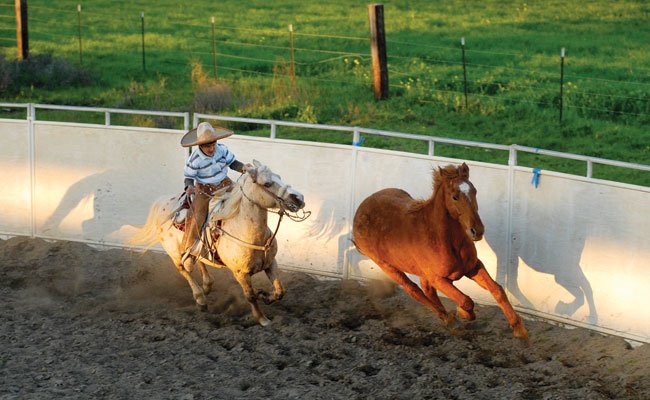The worsening economic situation and the county’s growing budget
problem have brought a pause to the three-way standoff that has
colored the discussion of a proposed animal cruelty ordinance for
the past year.
The worsening economic situation and the county’s growing budget problem have brought a pause to the three-way standoff that has colored the discussion of a proposed animal cruelty ordinance for the past year.
The Santa Clara County Board of Supervisors has decided, in line with staff recommendations, to delay any further discussion or evaluation of the ordinance which would have included among its provisions the banning of steer tailing, an event commonly practiced at Mexican rodeos.
Supervisor Don Gage, who represents South County on the board, said the county doesn’t have the time and resources to consider the ordinance when a projected deficit of $220 million for 2010 continues to grow, and the board will face many other tough decisions such as how many employees to lay off during the ongoing economic crisis.
“We don’t feel the animal cruelty ordinance is a high priority right now,” Gage said. He added that animals are sufficiently protected under existing state laws and county ordinances, and by the apparent lack of events featuring steer tailing in the county already.
“This is something we feel is already under control,” Gage said, although he added, “We shouldn’t do steer tailing, and we shouldn’t be doing horse tripping.”
Although only one aspect of the proposed ordinance was contentious, its purpose was to address the treatment of animals at rodeos and circuses. Supplementing state laws regulating the events, the draft ordinance required a veterinarian to be present at all circuses and rodeos, clean water to be available to participating animals, and would ban the “horse tripping” event which is already prohibited by state law.
Steer tailing, known as colas at Mexican rodeos, consists of a cowboy, or charro, riding on horseback and pulling up beside a cow running loose in the arena, grabbing its tail and wrapping it around the charro’s stirrup, causing the animal to flip onto the ground.
Gage added that only two venues in Santa Clara County – the county fairgrounds on Tully Road and Rancho Grande arena in unincorporated Morgan Hill – conduct rodeo events, though they do not feature steer tailing. He said none of the county staff has heard of any “serious incidents” of injury or abuse to rodeo animals in Santa Clara County.
County staff predict the current economic downturn will continue for at least another three to five years, and Gage said the board might take up the animal cruelty ordinance after that time.
In a memo to the board of supervisors dated Jan. 16, acting county executive Gary Graves wrote, “we do not believe we have the resources at this time to adequately provide the review and development of options that will allow the board to make an informed decision on the (animal cruelty ordinance).”
Over the last year, the county has held numerous public hearings to evaluate the possible ordinance, and assigned staff time to write a draft, which until a couple of weeks ago was expected to be on the board’s agenda at a meeting this month.
The discussion created a three-way debate among county officials, Mexican rodeo supporters and animal rights activists. Rodeo supporters believed the ordinance was unfair because it only addressed Mexican events, while some American rodeo events are more inhumane than steer tailing. Animal rights activists said the ordinance did not go far enough, and should have banned many more rodeo practices.
Director of Agriculture and Environmental Management Greg Van Wassenhove said the proposed ordinance has already cost the county some money, though he did not have an estimate of how much.
“We have spent, already, a great deal of staff time, which equates to resources, in evaluating the ordinance to date,” Van Wassenhove said. He added that among the comments heard at the various public meetings were threats of litigation if the board had approved the ordinance, and its defense would have cost the county even more money.
Toby De La Torre, President of Federation of Charros USA, called the county’s decision a “relief” for Mexican rodeo participants, though the tense discussions over the past year have left a mark.
“It’s a chance for us to continue practicing a tradition, but it’s a scar because of the insults and the tactics that were used against us,” said De La Torre, who has called the proposed ordinance “racist.”
But Eric Mills, coordinator of Action for Animals in Oakland, is disappointed with the county’s decision not to enact an animal cruelty ordinance. The amount of time spent on the ordinance, both by the county and the public, has been a waste, he said.
Mills also rejected the idea that supporters of the ordinance are racist, as his organization supports banning a wide variety of both Mexican and American rodeo events they see as inhumane. He said he has videos of cows and horses suffering broken bones at rodeos throughout the country.
“Animals are sacrificed when financial times get tough,” Mills said. “I’ve been doing this for 30 years and the animals always get screwed.”













